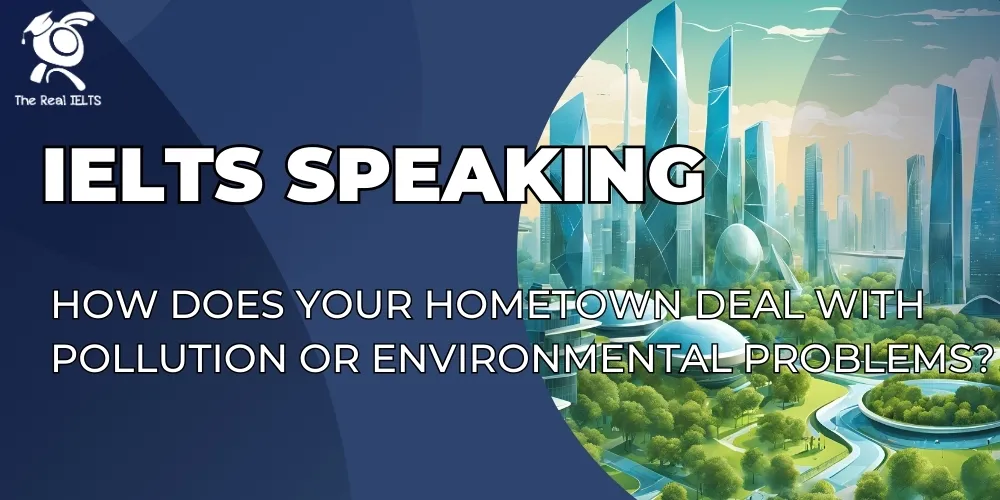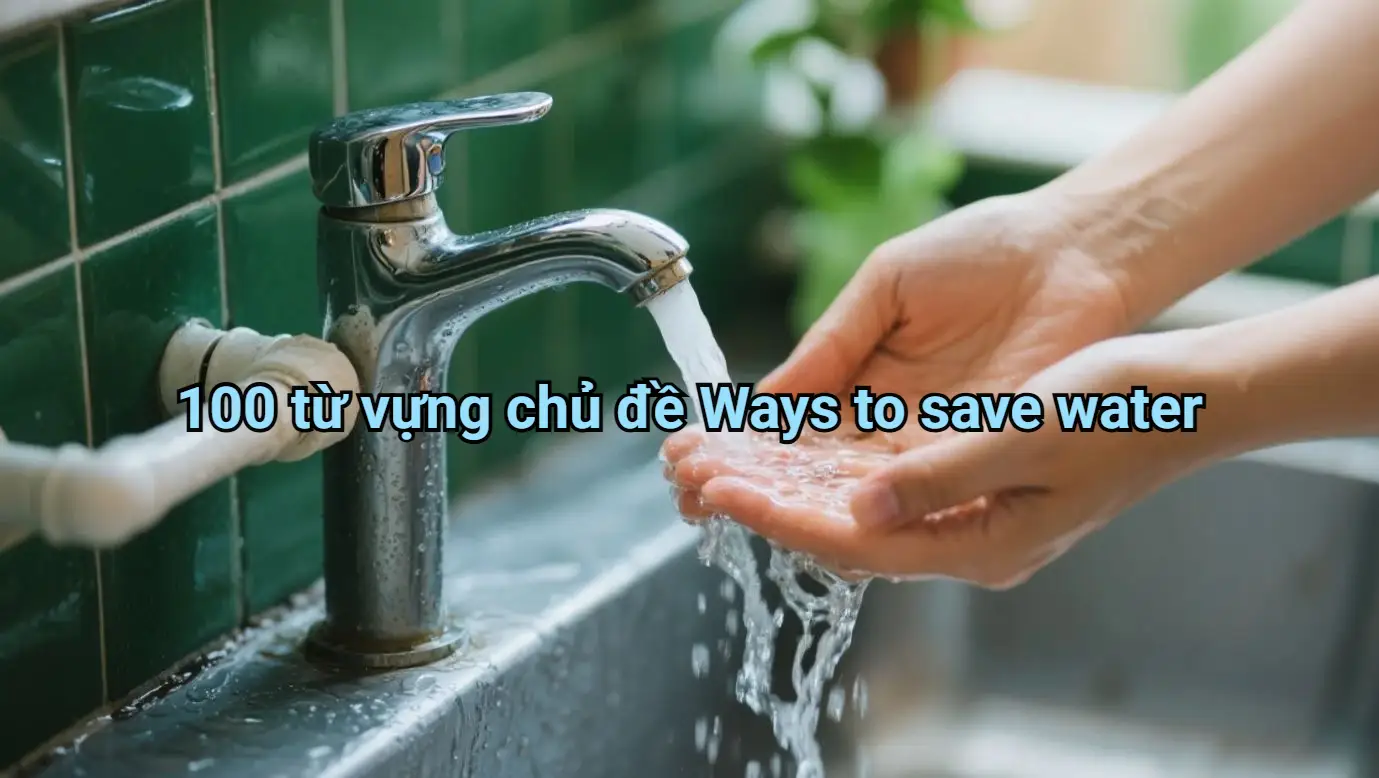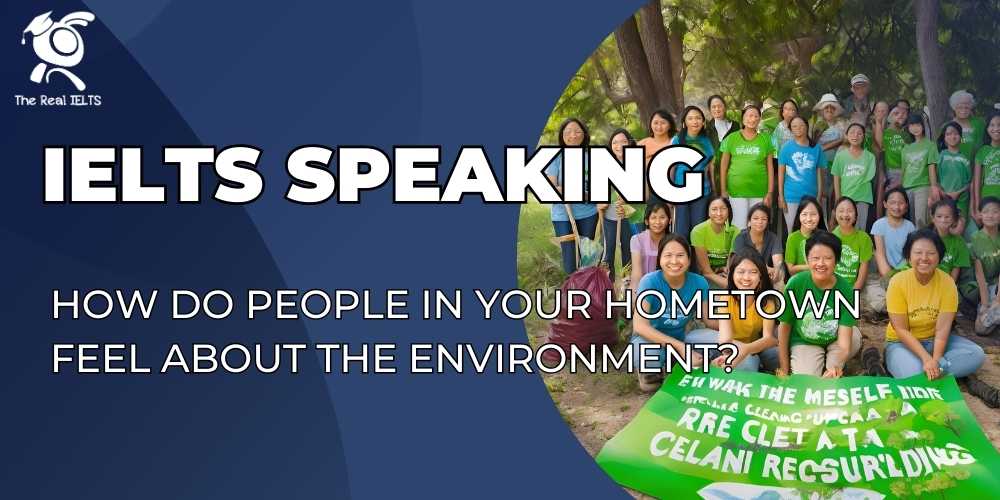Trong bài IELTS Speaking, chúng ta sẽ khám phá các biện pháp quê hương đang thực hiện để giải quyết ô nhiễm môi trường, từ tái chế đến các chính sách giảm thiểu khí thải.
Đọc thêm các bài luyện thi IELTS khác.
Đọc thêm câu hỏi khác tại: IELTS Speaking Part 1: Introduction and Interview chủ đề Your hometown.
Đọc thêm: IELTS Speaking: Do you think your hometown will become more modern in the future?
Câu trả lời cho IELTS Speaking: How does your hometown deal with pollution or environmental problems?
Ví dụ 1
Introduction:
Well, my hometown is a medium-sized city, and like many urban areas, it faces its fair share of environmental challenges. Over the years, pollution has become a growing concern due to industrialization, increasing vehicle emissions, and waste management issues. However, I’m glad to say that local authorities and residents have been taking steps to address these problems, and there’s been some noticeable progress.
Main Body 1: Air Pollution Measures
One of the biggest issues in my hometown is air pollution, mainly caused by vehicles and factories. To tackle this, the government has introduced stricter regulations on emissions. For example, all vehicles are required to undergo regular emission checks, and those that don’t meet the standards are fined or taken off the road. Additionally, there’s been a push to promote public transportation. The city has expanded its bus network and introduced electric buses, which are not only eco-friendly but also affordable for commuters. I think these efforts have made a difference, as the air quality has improved slightly over the past few years.
Main Body 2: Waste Management
Another major problem is waste management. In the past, littering was quite common, and landfills were overflowing. To combat this, the local government has launched recycling campaigns and set up separate bins for organic, recyclable, and non-recyclable waste in public areas. They’ve also started educating residents about the importance of reducing plastic use. For instance, many supermarkets now charge for plastic bags, encouraging people to bring their own reusable bags. These initiatives have raised awareness, and I’ve noticed that more people are now conscious of their waste habits.
Main Body 3: Green Spaces and Community Efforts
On top of that, my hometown has been investing in green spaces to improve the environment. Parks and tree-planting initiatives have been prioritized, which not only beautify the city but also help absorb carbon dioxide and reduce the urban heat effect. What’s more, community-driven activities like clean-up drives and tree-planting events are becoming more popular. Schools and local organizations often participate, which I think is a great way to involve everyone, especially the younger generation, in protecting the environment.
Conclusion:
Overall, while my hometown still has a long way to go in fully resolving its environmental issues, I’m optimistic about the steps being taken. The combination of government policies, technological advancements, and community involvement gives me hope that we’re moving in the right direction. If these efforts continue, I believe my hometown can become a cleaner and more sustainable place to live in the future.
Ví dụ 2
Introduction:
My hometown is a bustling urban area, and like many cities, it has been grappling with environmental issues such as air pollution, waste management, and water contamination. However, in recent years, there have been significant efforts to address these problems, and I’d like to share some of the measures that have been implemented.
Main Body 1: Air Pollution Control
First and foremost, air pollution has been a major concern due to the high number of vehicles and industrial activities. To tackle this, the local government has introduced a number of policies. For example, they’ve implemented a “no-car day” once a week, where people are encouraged to use public transport or bicycles instead of driving. Additionally, there’s been a shift towards renewable energy sources. Solar panels are being installed on public buildings, and some factories have started using cleaner technologies to reduce their carbon footprint. These measures have gradually improved air quality, though there’s still room for improvement.
Main Body 2: Waste Management Initiatives
Another pressing issue is waste management. In the past, improper disposal of waste was a common problem, leading to polluted streets and waterways. To address this, the city has introduced a comprehensive recycling program. Households are now required to separate their waste into categories like organic, recyclable, and hazardous materials. There are also regular campaigns to educate people about the importance of reducing, reusing, and recycling. For instance, schools often organize workshops where students learn how to turn plastic waste into useful items. These efforts have not only reduced the amount of waste going to landfills but have also fostered a sense of responsibility among residents.
Main Body 3: Water Conservation and Clean-Up Projects
Water pollution is another challenge my hometown faces, particularly in rivers and lakes. To combat this, the government has launched clean-up projects to remove trash and harmful chemicals from water bodies. They’ve also set up water treatment plants to ensure that wastewater from industries and households is properly treated before being released back into the environment. On a smaller scale, community groups often organize clean-up drives where volunteers come together to pick up litter along riverbanks. These initiatives have made a visible difference, and some areas that were once heavily polluted are now much cleaner.
Main Body 4: Green Spaces and Urban Planning
Lastly, my hometown has been focusing on creating more green spaces to improve the overall environment. New parks and gardens have been developed, and there’s a strong emphasis on preserving existing trees and planting new ones. Urban planning now prioritizes sustainability, with new buildings being designed to be energy-efficient and eco-friendly. For example, some residential complexes have rooftop gardens and rainwater harvesting systems. These green initiatives not only enhance the city’s appearance but also contribute to better air quality and a healthier ecosystem.
Conclusion:
In conclusion, while my hometown still faces environmental challenges, the combined efforts of the government, businesses, and residents are making a positive impact. From air pollution control to waste management and water conservation, these measures show a commitment to creating a cleaner and more sustainable environment. I believe that with continued effort and innovation, my hometown can overcome these challenges and become a model for other cities to follow.
This version provides a different perspective and includes additional examples, such as water conservation and urban planning, to make the response more comprehensive and engaging. It also uses a variety of linking words and phrases to ensure coherence and fluency.
Ví dụ 3
Introduction:
My hometown is a coastal city, and while it’s known for its beautiful beaches and vibrant culture, it hasn’t been immune to environmental problems. Over the years, issues like plastic pollution, air quality degradation, and deforestation have become more prominent. However, I’m proud to say that both the local government and the community have been working together to tackle these challenges, and I’ve personally witnessed some positive changes.
Main Body 1: Plastic Pollution and Beach Clean-Ups
One of the most visible problems in my hometown is plastic pollution, especially along the coastline. In the past, it wasn’t uncommon to see plastic bottles, bags, and fishing nets washed up on the shore. To address this, the local government has banned single-use plastics in public areas, and businesses are encouraged to use biodegradable alternatives. What’s even more inspiring is the community’s involvement. Every month, volunteers organize beach clean-up events, and I’ve participated in a few myself. It’s heartening to see people of all ages coming together to protect our natural environment. These efforts have made a noticeable difference, and the beaches are much cleaner now than they were a few years ago.
Main Body 2: Air Quality Improvement
Another issue my hometown faces is air pollution, particularly during the dry season when dust and vehicle emissions are at their peak. To combat this, the government has introduced measures like promoting electric vehicles and improving public transportation. For example, there’s now a network of electric scooters and bikes available for rent, which has become quite popular among locals and tourists alike. Additionally, factories are required to install air filtration systems to reduce harmful emissions. While air quality is still not perfect, these steps have definitely helped, and I’ve noticed fewer days with smog compared to before.
Main Body 3: Reforestation and Green Spaces
Deforestation has also been a concern, especially in the outskirts of the city where land is often cleared for development. To counter this, the local authorities have launched reforestation projects, planting thousands of trees in areas that were previously barren. Schools and community groups often participate in these initiatives, and I remember joining a tree-planting event with my classmates a few years ago. It was a rewarding experience, and it’s amazing to see those trees growing taller each year. Moreover, the city has been creating more green spaces, like parks and gardens, which not only improve the environment but also provide residents with places to relax and connect with nature.
Main Body 4: Education and Awareness
Finally, I think one of the most effective ways my hometown is dealing with environmental problems is through education. Schools have incorporated environmental studies into their curriculum, teaching students about the importance of sustainability and conservation. There are also regular workshops and campaigns to raise awareness among the general public. For instance, during Earth Day, the city organizes events like eco-fairs and recycling drives. These initiatives have helped change people’s attitudes, and I’ve seen more and more people adopting eco-friendly habits, like using reusable water bottles and reducing energy consumption.
Conclusion:
In conclusion, while my hometown still has its share of environmental challenges, the collective efforts of the government, organizations, and individuals are making a real difference. From reducing plastic waste to improving air quality and promoting green spaces, these actions show a commitment to creating a healthier and more sustainable future. As someone who cares deeply about my hometown, I’m hopeful that these efforts will continue to grow and inspire even greater change.
Ví dụ 4
Introduction:
My hometown is a rapidly developing city, and with growth comes environmental challenges like pollution, waste management, and resource depletion. However, what sets my hometown apart is its commitment to leveraging technology and innovative solutions to tackle these problems. Over the past decade, there have been significant strides in making the city more sustainable, and I’d like to share some of the key initiatives that have been implemented.
Main Body 1: Smart Waste Management Systems
One of the most impressive changes in my hometown is the introduction of smart waste management systems. Traditional waste collection methods were inefficient and often led to overflowing bins and littered streets. To address this, the city has installed smart bins equipped with sensors that notify waste management teams when they’re full. This ensures timely collection and reduces the chances of waste spilling onto the streets. Additionally, there’s now an app that residents can use to report littering or illegal dumping, which has made the process more transparent and efficient. These technological advancements have significantly improved the cleanliness of the city.
Main Body 2: Renewable Energy Projects
Another area where my hometown is making progress is in the adoption of renewable energy. The city has invested heavily in solar and wind energy projects, with solar panels being installed on public buildings, schools, and even some residential complexes. There’s also a large wind farm on the outskirts of the city that generates a substantial portion of the city’s electricity. To encourage residents to switch to renewable energy, the government offers subsidies for installing solar panels at home. I’ve noticed that more and more households are taking advantage of this, which not only reduces their carbon footprint but also lowers their electricity bills.
Main Body 3: Green Transportation Initiatives
Transportation is a major contributor to air pollution in my hometown, so the government has been pushing for greener alternatives. The city has introduced a fleet of electric buses and is building dedicated bike lanes to encourage cycling. There’s also a bike-sharing program that has become quite popular, especially among young people. For those who prefer driving, the city has set up charging stations for electric vehicles across key locations. These initiatives have not only reduced emissions but also made the city more accessible and pedestrian-friendly.
Main Body 4: Water Conservation and Recycling
Water scarcity is another issue my hometown has been addressing through innovative solutions. The city has implemented a comprehensive water recycling system where treated wastewater is reused for irrigation and industrial purposes. Rainwater harvesting is also being promoted, with new buildings required to have systems in place to collect and store rainwater. In addition, there are public awareness campaigns about water conservation, teaching residents simple habits like fixing leaks and using water-saving appliances. These efforts have helped reduce water wastage and ensure a more sustainable supply.
Main Body 5: Long-Term Sustainability Goals
Looking ahead, my hometown has set ambitious long-term sustainability goals. For example, the city aims to become carbon-neutral by 2040, and there are plans to expand green spaces and urban forests to improve air quality and biodiversity. The government is also working with universities and research institutions to develop new technologies for environmental protection. It’s inspiring to see such a forward-thinking approach, and I believe these efforts will have a lasting impact on the city’s environment and quality of life.
Conclusion:
In conclusion, my hometown is taking a proactive and innovative approach to addressing environmental problems. From smart waste management to renewable energy and green transportation, these initiatives demonstrate a strong commitment to sustainability. While challenges remain, I’m confident that with continued investment and community support, my hometown can become a model for other cities striving to balance development with environmental preservation.















